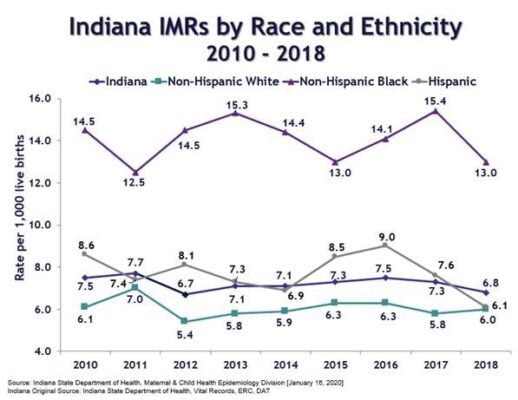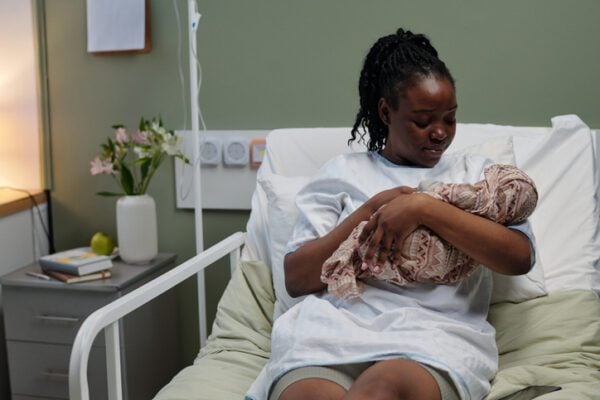Indiana has long carried the weight of a disquieting reality: its infant mortality rate consistently exceeds the national average.
Despite gradual improvements in recent years, the state continues to face one of the most persistent public health challenges, marked by stark racial disparities and systemic obstacles. Understanding and addressing this crisis demands more than surface-level solutions.

The weight of numbers
Infant mortality refers to the death of a child before reaching their first birthday.
As a critical indicator of public health, it reflects the broader socio-economic and healthcare dynamics of a region. In 2023, Indiana’s infant mortality rate was 6.5 deaths per 1,000 live births, a modest improvement from 7.2 the previous year. While progress is evident, Indiana remains among the ten worst states for infant mortality.
For Black infants, the picture is even grimmer: the mortality rate is 14.1 deaths per 1,000 live births, more than double that of white infants, which sits at 5.6. This disparity, unchanged for years, underscores deep inequities in healthcare access and outcomes for minority communities.

Factors feeding the crisis
Indiana’s infant mortality crisis is a confluence of interrelated issues, each exacerbating the others:
- Prenatal care deficits: Roughly 29% of Indiana births in 2022 involved individuals who did not access prenatal care during the first trimester.
- Economic and social barriers: Poverty, inadequate housing, limited transportation and food insecurity create environments where maternal and infant health deteriorate. Mothers in low-income brackets often face higher risks of preterm birth and low birth weight.
- Unsafe sleep practices: Sudden unexpected infant deaths (SUID) remain a leading cause of mortality. Unsafe sleep practices, such as co-sleeping and improper bedding, are prevalent, particularly among socioeconomically disadvantaged families.

Bridging the gap: State and community responses
Indiana has taken significant strides in addressing infant mortality, employing a multi-pronged approach that incorporates data, health care programs and community outreach:
My Healthy Baby Program
Launched statewide in 2023, this initiative pairs Medicaid-eligible pregnant individuals with family support workers. These workers provide education on prenatal care, parenting and safe sleep practices. The program’s expansion to all 92 counties has increased its reach to rural and underserved populations.
Safety PIN Grants
The Safety PIN (Protecting Indiana’s Newborns) grant program funds initiatives that improve maternal and infant health. Grants have supported hospital-led prenatal education, outreach to at-risk mothers and distribution of safe sleep equipment, such as cribs and swaddling kits.

Data-Driven Interventions
Collaborations with analytics firms like Resultant enable Indiana to identify high-risk populations. By analyzing demographic and health data, the state tailors interventions to communities where the need is greatest, maximizing impact and efficiency.
Faith-based and grassroots efforts
Community organizations and churches have also stepped up. Programs like the Indianapolis-based “Black Moms Matter” initiative foster peer support and advocacy among Black mothers, addressing the unique challenges they face.

Resources for families and advocates
Indiana’s Department of Health provides numerous resources for families, including safe sleep education and referrals to prenatal services. Hospitals like IU Health and community organizations offer programs tailored to maternal health needs.
For more information, visit the Indiana Department of Health’s Maternal and Child Health Division at in.gov/health/mch/.
This reporting is made possible by a grant from the Indianapolis African-American Quality of Life Initiative, empowering our community with essential health insights. https://iaaqli.org/
Contact Health & Environmental Reporter Hanna Rauworth at 317-762-7854 or follow her on Instagram at @hanna.rauworth.
Hanna Rauworth is the Health & Environmental Reporter for the Indianapolis Recorder Newspaper, where she covers topics at the intersection of public health, environmental issues, and community impact. With a commitment to storytelling that informs and empowers, she strives to highlight the challenges and solutions shaping the well-being of Indianapolis residents.





